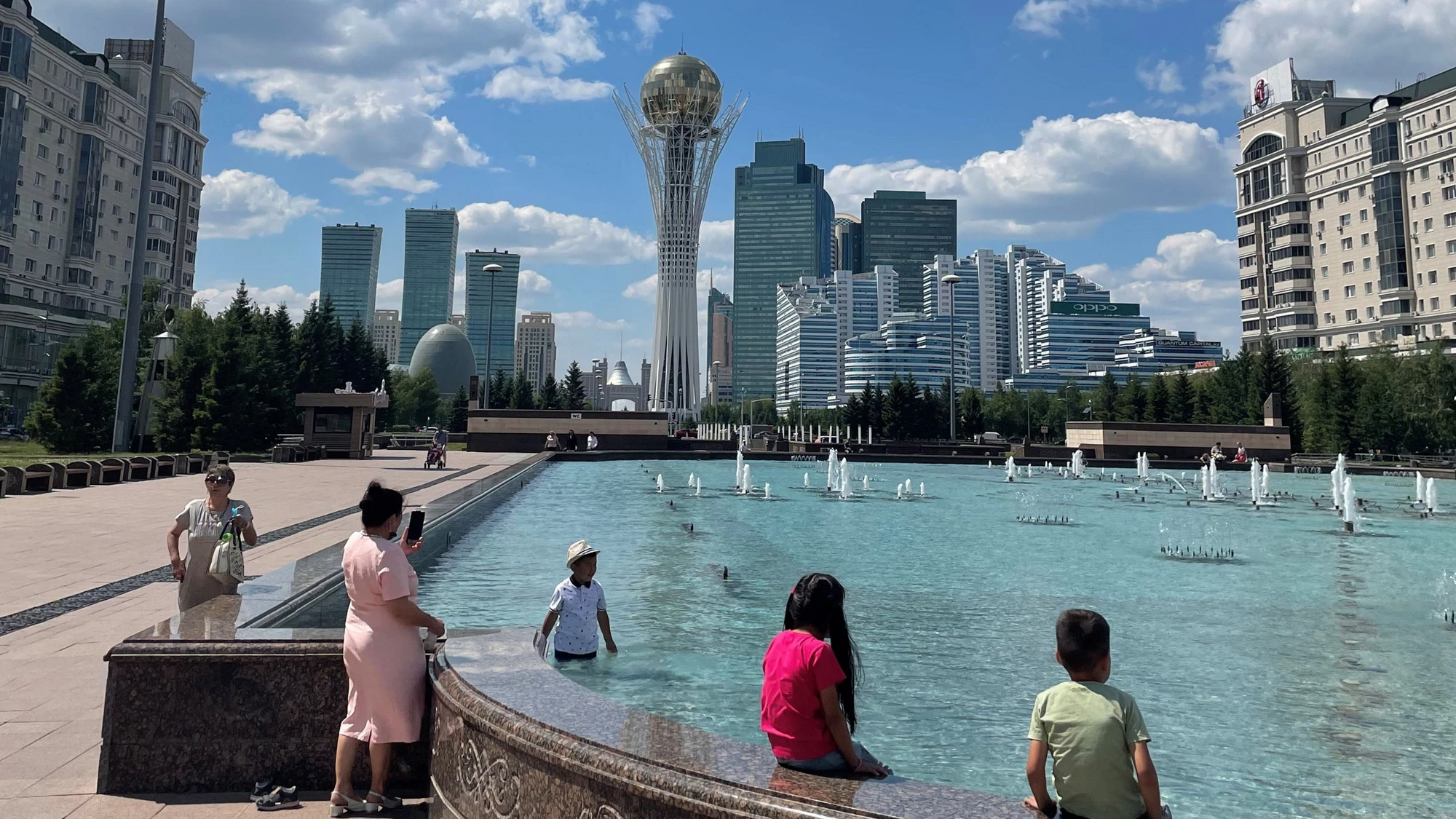 Город Нур-Султан, Казахстан.
Город Нур-Султан, Казахстан.
Since I came to Nur-Sultan as World Bank Country Manager for Kazakhstan in 2019, and despite the pandemic, I have experienced firsthand the city’s vibrant development and Kazakhstan’s impressive economic growth. Yet, the marked progress that Kazakhstan has achieved over the past quarter century has been largely driven by the country’s energy and extractives sector, which accounted for an average of 16.7 percent of Kazakhstan’s GDP between 2014 and 2019.
At the December 2020 UN Climate Ambition Summit, Kazakhstan’s President Tokayev, speaking from his office in Nur-Sultan, made a bold proclamation: that Kazakhstan will achieve carbon neutrality by 2060. This is an ambitious commitment from a country where extraction, processing, transportation, storage, and combustion of fuels contribute to more than 80% of national greenhouse gas (GHG) emissions and make Kazakhstan the largest CO2 emitter in Central Asia and 14th largest in the world.
How can Kazakhstan’s ambitious carbon neutrality goal by 2060 be reconciled with energy-driven economic growth?
Kazakhstan is getting several things right. In 2015, the country submitted its first National Determined Contributions (NDC), a commitment under the Paris Agreement to limit global warming to well below 2°C, compared to the 1990 levels. The NDC proposed an economy-wide unconditional absolute reduction of 15% of its GHG emissions by 2030. Since then, the country has strengthened its Environmental Code and advanced policies to encourage emitters to reduce GHG emissions and seek cleaner alternatives.
Kazakhstan is also the first country in Central Asia to pass legislation and establish a national Emissions Trading Scheme (ETS), which puts a price on carbon. The ETS began in 2013 (with a hiatus in 2016-2017) and regulates about 40% of Kazakhstan’s domestic CO2 emissions. Specifically, the ETS applies to 225 large entities whose emissions exceed 20,000 tons of CO2 each year and are involved with power, centralized heating, extractive industries and manufacturing.
Despite these policy commitments, Kazakhstan’s CO2 emissions have more than doubled since 2000.
To accelerate progress, Kazakhstan sought help from the World Bank. We collaborated with the government on the Partnership for Market Readiness Program, which provides short- to medium-term policy recommendations and builds capacity to support Kazakhstan on its path to carbon neutrality.
The PMR helped Kazakhstan strengthen its ETS and establish an e-reporting platform for GHG emissions. The PMR also verified the functionality of the country’s carbon registry and provided the extensive macroeconomic modeling necessary to establish the cap for the 4th National Allocation Plan (NAP) in 2021 and proposed the caps for 5th and 6th NAP for 2022-2030.
Finally, in preparation for the November 2021 COP26 and UNFCCC in Glasgow, the PMR outlined a roadmap of necessary technical measures and investments that will be necessary over the next decade for Kazakhstan to achieve its updated NDC. According to the roadmap, Kazakhstan should pursue targeted decarbonization measures between 2023-2030 across seven sectors of the economy: energy, agriculture and forestry, industry, utilities, coal industry, waste management, and transport. Among these, the electricity market, heating market and the mining and metal industries will be among the most critical building blocks to significantly reducing the country’s energy intensity. The roadmap also recommends increasing investments in renewable energy, energy sufficiency and waste reduction management, among other measures.
Without implementing these recommendations, it will be challenging for Kazakhstan to meet its carbon neutrality target by 2060, its NDC commitments by 2030, or even remain competitive in global markets. The European Union is one of Kazakhstan’s key export markets. The EU’s Green Deal and its Carbon Border Adjustment Mechanism (CBAM) will likely create significant trade barriers for Kazakhstan’s carbon-intensive exports.
Kazakhstan has the potential to be a climate leader in Central Asia. I am delighted to witness our continued close collaboration with Kazakhstan even during the COVID-19 pandemic, which attests to the country’s commitment to post-pandemic green and resilient recovery–a model of economic development that efficiently uses natural resources, minimizes pollution and environmental impacts, and is resilient against climate change impacts. I am confident the government’s commitment to policy and institutional actions, technical measures, and associated investments can help Kazakhstan meet its 2030 targets and support a long-term strategy towards carbon neutrality by 2060.


Join the Conversation